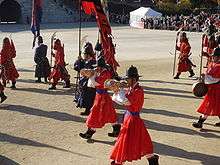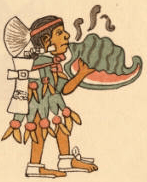Conch (instrument)


Conch, or conque, also known as a "seashell horn" or "shell trumpet", is a musical instrument, a wind instrument that is made from a seashell, the shell of several different kinds of very large sea snails.
The shells of large marine gastropods are prepared by cutting a hole in the spire of the shell near the apex, and then blowing into the shell as if it were a trumpet, as in blowing horn. Sometimes a mouthpiece is used, but some shell trumpets are blown without one.
Various species of large marine gastropod shells can be turned into "blowing shells", but some of the best-known species are: the sacred chank or shankha Turbinella pyrum; the "Triton's trumpet" Charonia tritonis; and the Queen Conch Strombus gigas.
Prehistory

Shell trumpets have been known since the Magdalenian period (Upper Paleolithic), one example being the "conch Marsoulas", an archeological shell trumpet which is on display at the Museum de Toulouse.
India and Tibet
The sacred chank, Turbinella pyrum, is known in India as the shankha. In Tibet it is known as "Dung-Dkar".[1] For the Hindu context, see the article shankha.
Mesoamerica

Throughout Mesoamerican history, conch trumpets were used, often in a ritual context (see figure). In Ancient Maya art, such conches were often decorated with ancestral images; scenes painted on vases show hunters and hunting deities blowing the conch trumpet.
The Caribbean
The Queen Conch Strombus gigas was, and sometimes still is, used as a trumpet in the West Indies and other parts of the Caribbean.
The Pacific Ocean area
The Triton shell, also known as "Triton's trumpet" Charonia tritonis, is used as a trumpet in Melanesian and Polynesian culture, and also in Korea and Japan. In Japan this kind of trumpet is known as the horagai. In Korea it is known as the nagak. In some Polynesian islands it is known as "pu".[1]
Conch shell trumpets were historically used throughout the South Pacific, in countries such as Fiji. In resorts in Fiji they still blow the shell as a performance for tourists. The Fijians also used the conch shell when the chief died: the chief's body would be brought down a special path and the conch would be played until the chief's body reached the end of the path.
Europe
Malta
In Malta the instrument is called a bronja, colloquially known as tronga. The shell of a sea snail is modified, with a hole at one end, and when blown it creates a strong noise reaching a large distance in a given Maltese village. The tronja was generally used to inform the people that the windmills on the islands are operating that day due to being a windy day, of which wind allows the grain of wheat and other.[3]
Modern use
The American jazz trombonist Steve Turre also plays conches, notably with his group Sanctified Shells.[4]

A partially echoplexed Indian conch was featured prominently as the primary instrument depicting the extraterrestrial environment of the derelict spaceship in Jerry Goldsmith's score for the film Alien. Director Ridley Scott was so impressed by the eerie effect that he requested its use throughout the rest of the score, including the Main Title.[5]
Media
| Wikimedia Commons has media related to Conches (musical instruments). |
 |
Conch shell
Demonstration of the sound of a conch shell |
| Problems playing this file? See media help. | |
References
- 1 2 Shell Trumpets- Experimental Musical Instruments
- ↑ Nahuatl dictionary. (1997). Wired humanities project. Retrieved August 31, 2012, from link
- ↑ Testa, Frank (undated). L-Imtiehen. schoolnet.gov.mt. Retrieved 29 June 2016.
- ↑ Steve Turre's Sanctified Shells Band, from allaboutjazz.com, 2003-04-10
- ↑ Mike Matessino, CD-booklet Alien: Complete Original Motion Picture Soundtrack, Intrada (MAF 7102), 2007